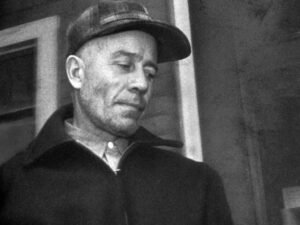As an educator, I’ve always searched for effective frameworks to enhance my lesson plans. One such strategy that stands out is the 5E lesson plan model. This approach helps me create engaging, dynamic learning experiences, and it’s adaptable to any subject. In this article, I’ll dive into each component: Engage, Explore, Explain, Elaborate, and Evaluate, providing insights into how to implement it effectively.
What is the 5E Model?
Before we hit the details, let me give you a brief overview of the 5E model. Developed by the Biological Sciences Curriculum Study (BSCS), it’s a constructivist approach that encourages active learning. Instead of passively receiving information, students become involved participants in their educational journey. This model is especially effective for fostering critical thinking and problem-solving skills. Each phase is designed to build on the previous one, creating a cohesive learning experience.
1. Engage
The first step in the 5E lesson plan is the Engage phase. Here, the goal is to capture students’ interest and provoke their curiosity. I often kick off this part of the lesson with a thought-provoking question, a short video clip, or even a surprising demonstration related to the topic at hand.
For instance, if I’m introducing the concept of ecosystems, I might show a time-lapse video of a forest changing through the seasons. This immediately hooks the students, prompting them to wonder about the ecological changes. The key is to spark curiosity without providing too much information; I want them to crave further exploration. Engaging students in a relevant context is crucial—making connections to real-world applications leads to deeper understanding.
2. Explore
Next up is the Explore phase. This is where students dive into hands-on activities that allow them to investigate the topic more deeply. I love this part because students get to collaborate, ask questions, and discover answers through guided inquiry. It’s a more freeform approach where I facilitate rather than direct learning.
Using the ecosystem theme, I might have students work in small groups to collect data from different parts of the schoolyard, examining plant and animal life. They could make observations, take notes, and even collect digital images. This exploratory phase invites students to engage with the material on a personal level, paving the way for deeper learning. It promotes critical thinking and gives them the chance to explore concepts at their own pace.
3. Explain
Once the exploration is complete, it’s time for the Explain phase. During this phase, I encourage students to share their findings. This is where structured learning comes into play. I help them communicate their insights, using the vocabulary and concepts we’ve introduced. I find that peer teaching often happens here, as students learn from one another.
After discussing their observations, I provide more detailed explanations or demonstrations that clarify complex concepts. For example, I could explain the interrelationships in an ecosystem or the impact of external factors like climate change on biodiversity. The goal in this phase is to connect what they’ve explored with formal scientific language and principles. It’s also an opportunity for me to assess their understanding and clear up any misconceptions.
4. Elaborate
Now we transition to the Elaborate phase. This is where students take the concepts they’ve just learned and apply them in new and varied contexts. It’s a vital stage that encourages higher-order thinking. I usually assign projects that require students to synthesize information and demonstrate their understanding creatively.
For example, I might have students design a model ecosystem or create a presentation showcasing how human activities impact local environments. This phase allows them to explore applications beyond the initial lesson. They can connect what they’ve learned to larger societal issues, which helps solidify their comprehension and highlights the relevance of their studies.
5. Evaluate
Finally, we arrive at the Evaluate phase. Here, I assess students’ understanding of the concepts, both formally and informally. I find that self-assessment can be particularly effective. I encourage students to reflect on their learning, consider what worked well, and identify areas for improvement.
Additionally, I might conduct traditional assessments like quizzes or projects, but I also value observations and discussions. Formative assessments throughout the lesson help me gauge where each student stands and allows for adjustments in instruction when necessary. The end goal is to ensure that not only have they acquired knowledge, but they’ve also learned how to apply it independently.
Conclusion
Mastering the 5E lesson plan model can transform your teaching practice and significantly enhance student engagement and understanding. Each phase serves a distinct purpose, but they all work together to create a meaningful learning experience. I encourage educators at all levels to give the 5E lesson plan a try. You might discover it’s exactly what you need to boost engagement and facilitate deeper learning in your classroom.
In the rapidly changing world of education, adopting innovative strategies like the 5E model can make all the difference. I’ve seen firsthand how it encourages students to take charge of their own learning, fostering curiosity and critical thinking skills that will serve them well beyond the classroom. So, why not give it a shot in your next lesson? You might find more engaged, enthusiastic students eager to learn.




